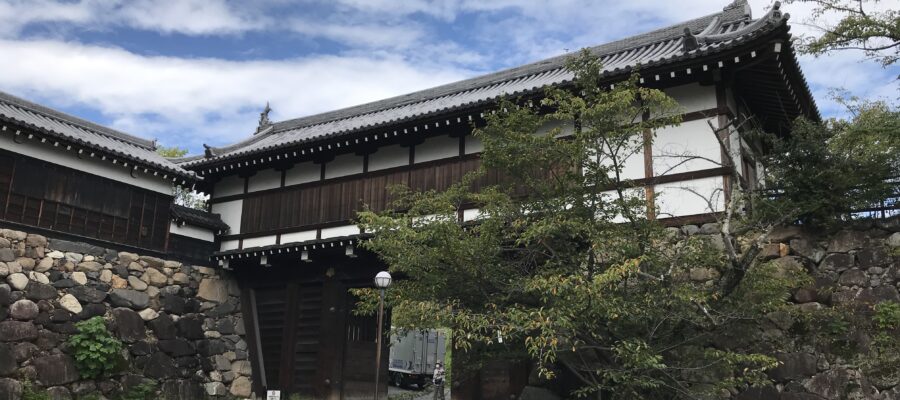筒井順慶が築城した城
織田信長の時代に、筒井順慶が築城した郡山城ですが、豊臣秀吉の時代となり、弟の豊臣秀長の百万石の居城とし発展しました。現在は、続日本100名城に認定されています。奈良出張の際に、寄り道をして訪問してきました。近鉄線の郡山駅から線路沿いに徒歩で北上すると、堀と石垣が見えてきます。
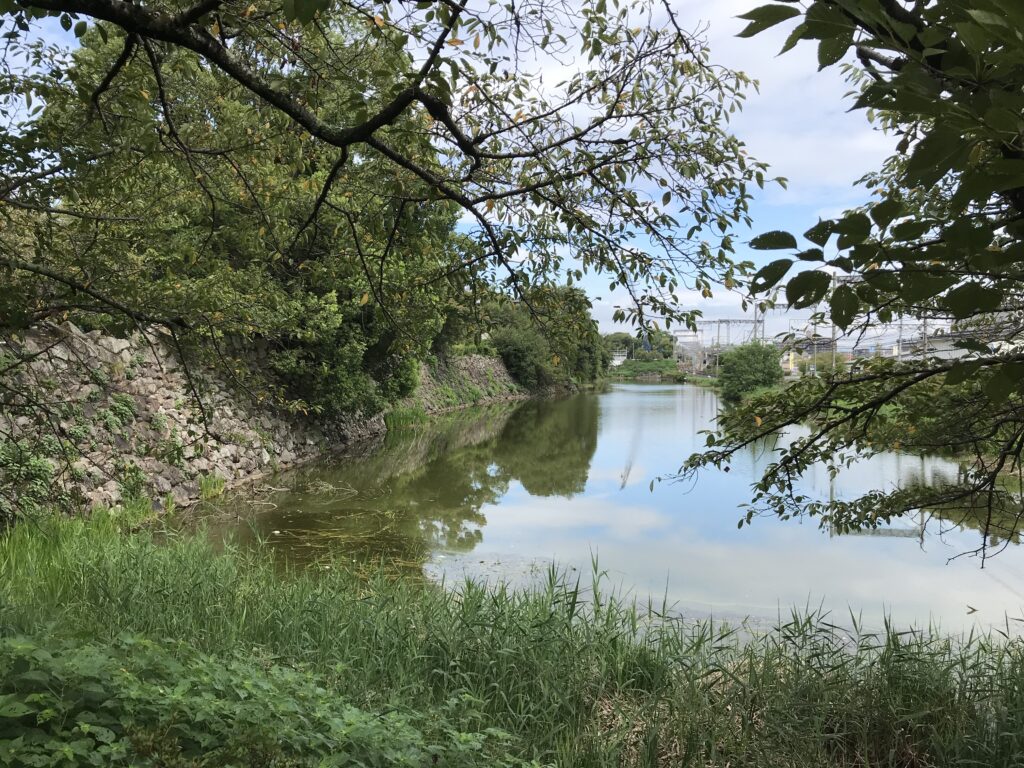
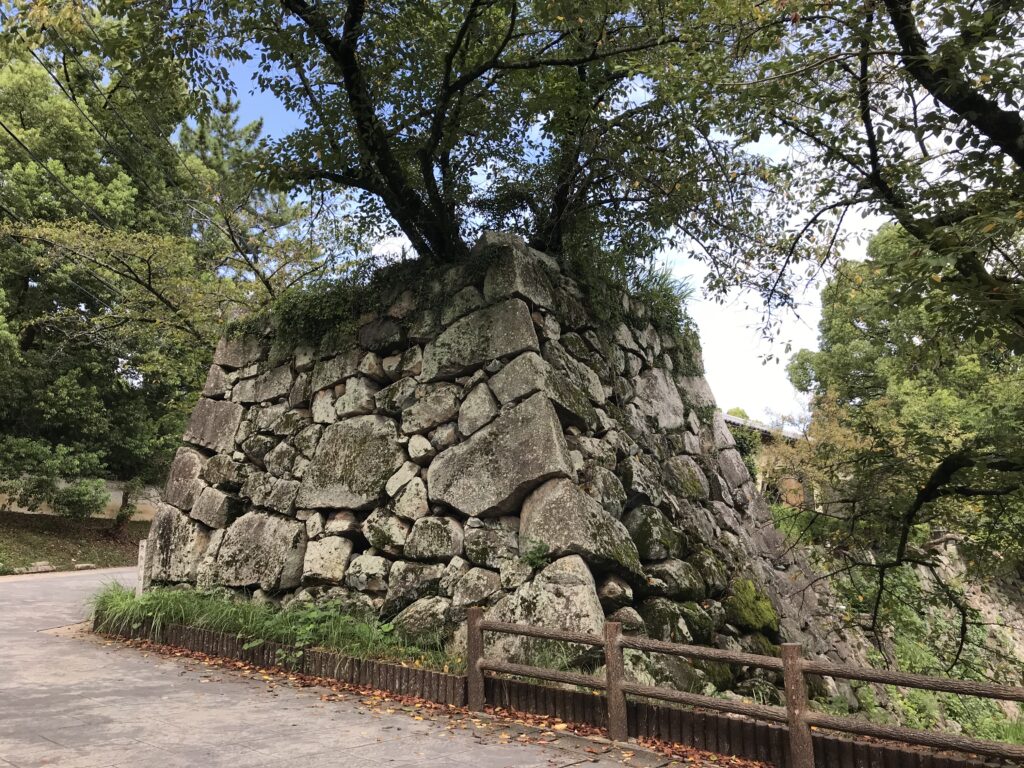
柳沢家が甲府から移封される
城内に入り郡山高校の前を右折して、鳥居をくぐりました。鳥居の先には柳沢神社が見えています。お祀りされているのは徳川五代将軍の綱吉の側用人である柳澤吉保。吉保自身は川越甲府城の城主となりましたが、息子の吉里が国替で甲府より転じて郡山城(15万石)の城主となりました。
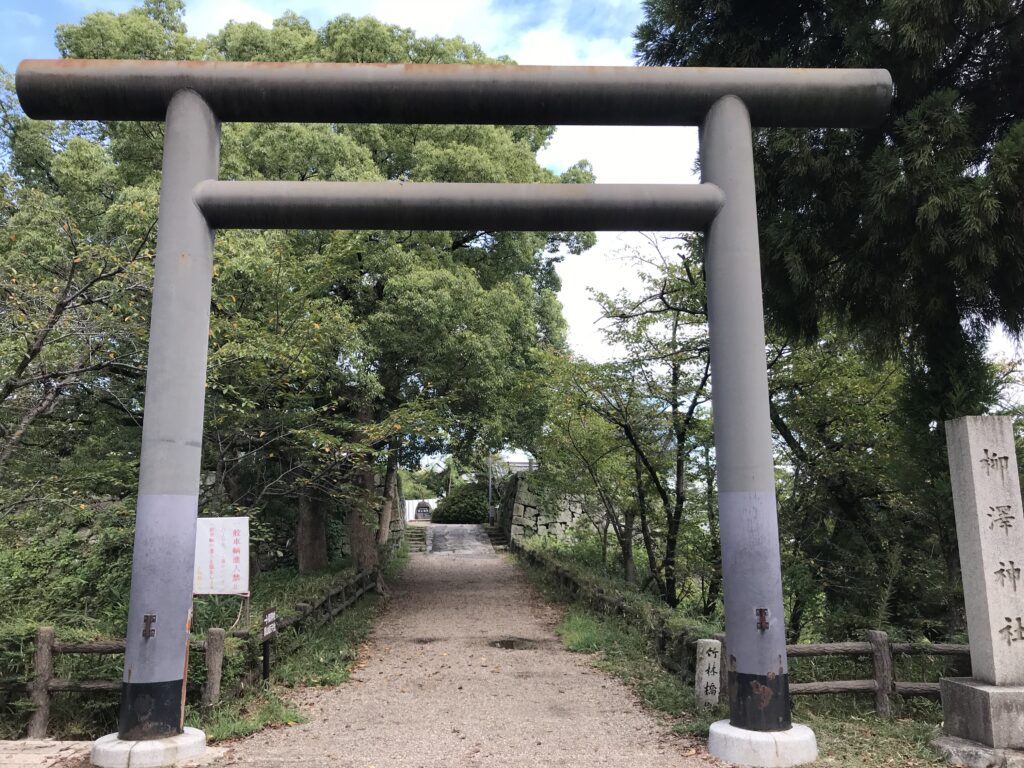
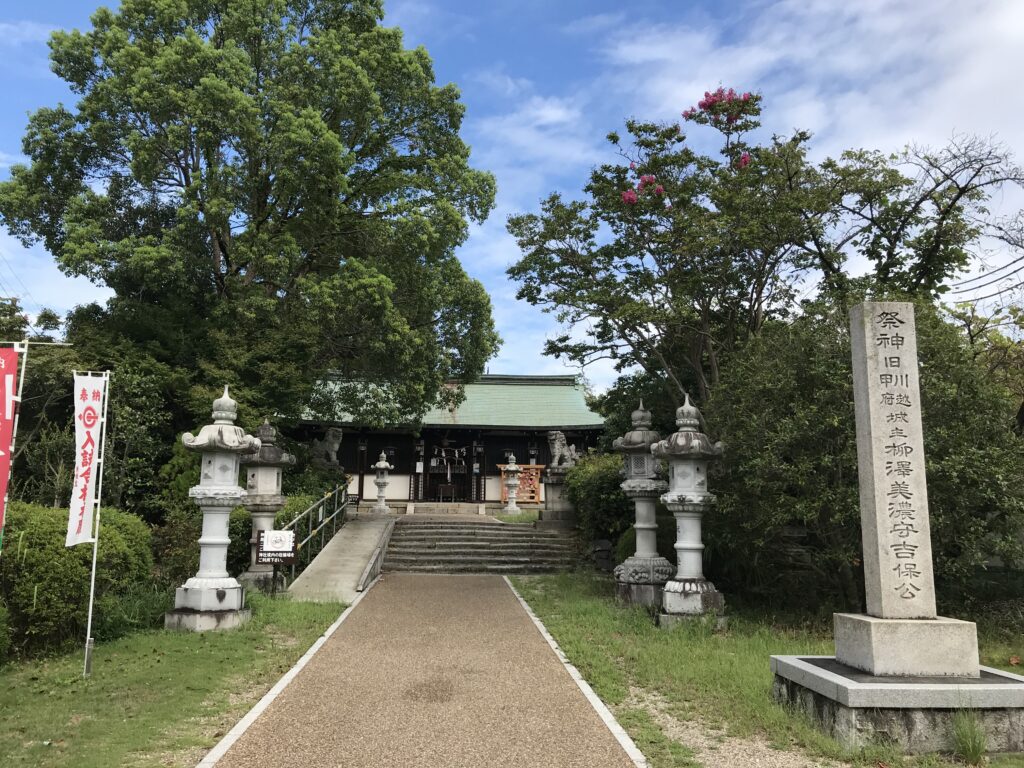
近年に整備された天守台には登ることができます。石垣の上には、何らかの建物の礎石が置かれています。この天守台のフォルム、なかなか格好いいですよね。平日の昼間でしたので、見物客も全くおらず、天守台を独り占めすることができました。
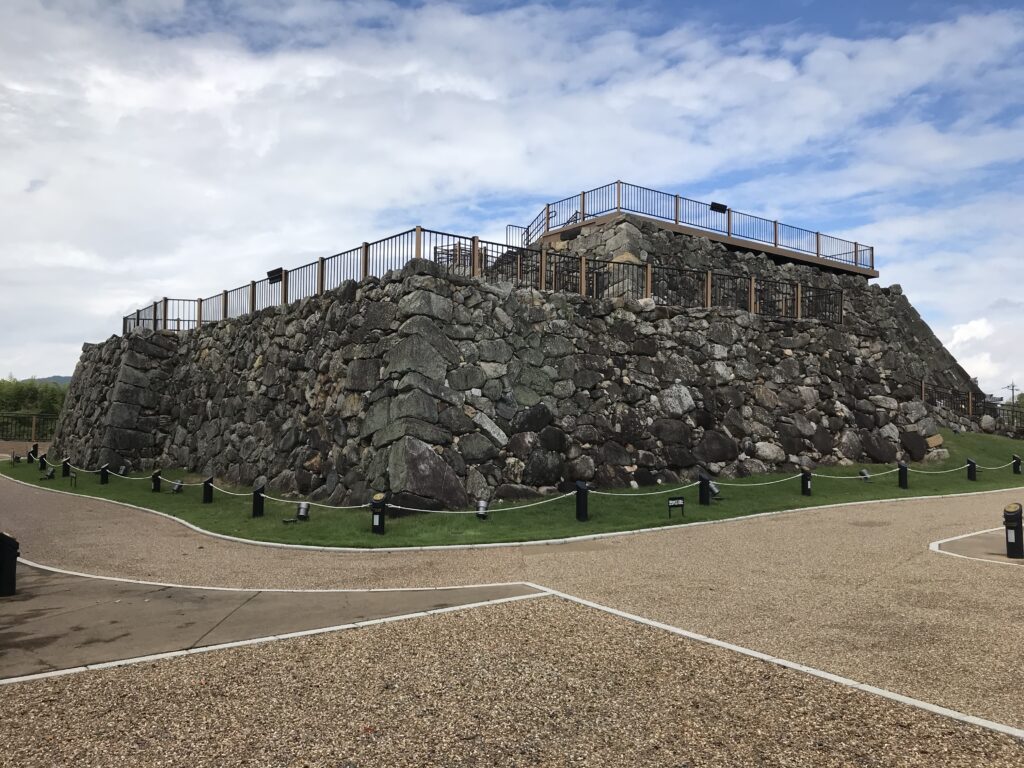
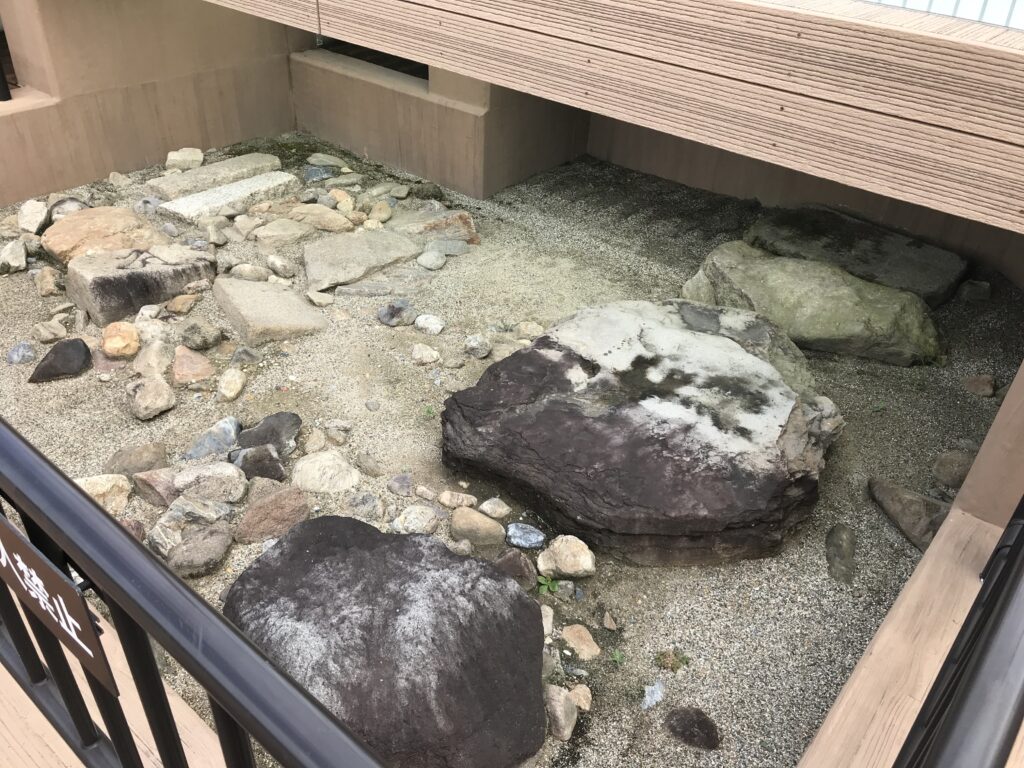
ここから見る奈良の風景は、高い建物がないので、隅々まで見渡すことができます。遠くに復元された大極殿もうっすらと見えていました。奈良って時間が悠久に経過しているイメージがあるので、豊臣秀長が見たのと、ほぼ同じ光景を見ているのだなと感じます。
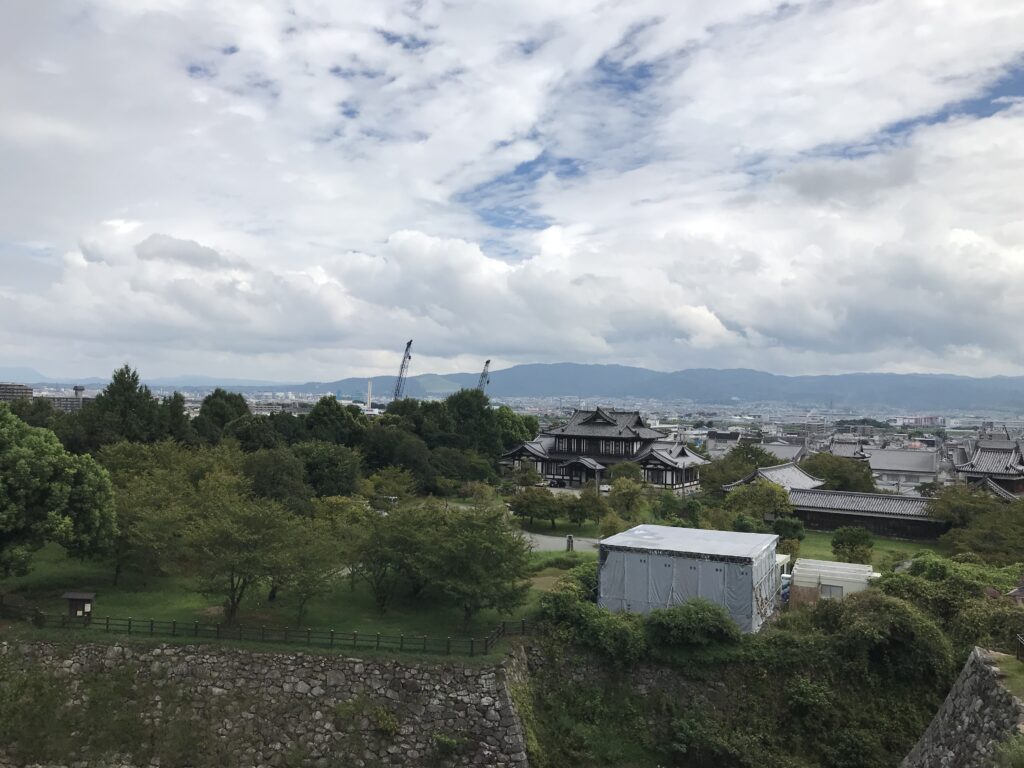
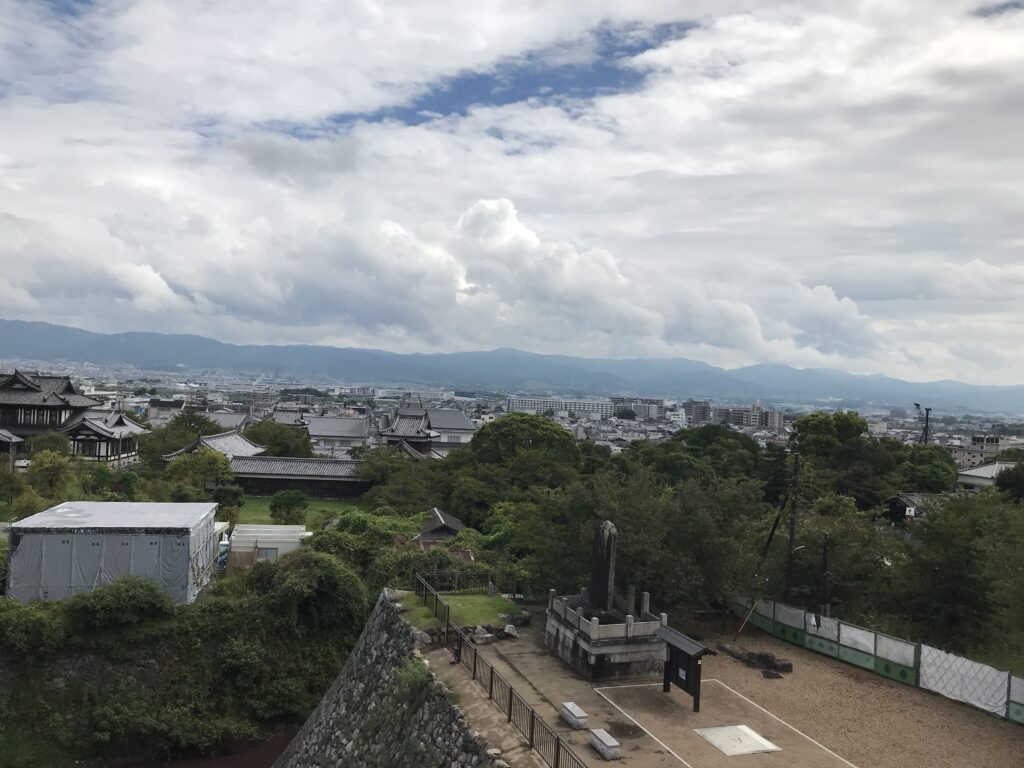
明治以降に廃城となるが、近年は修復・整備が進む
明治維新以降、廃城となり全ての建物が取り除かれましたが、追手門や櫓が修復・整備され、城らしさが増しています。奈良は、平城京跡、東大寺や唐招提寺など、奈良時代の遺構のイメージに引っ張られますが、決して歴史が断絶しておらず、戦国期や江戸時代にはお城が建てられていたことを改めて確認できました。(完)
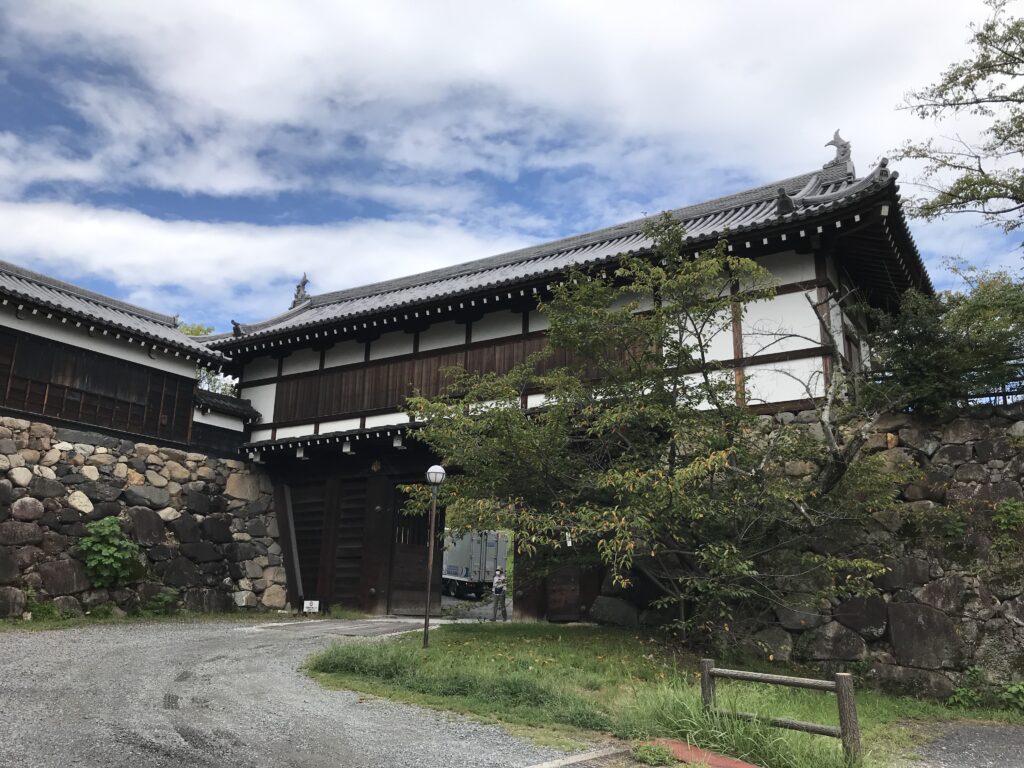
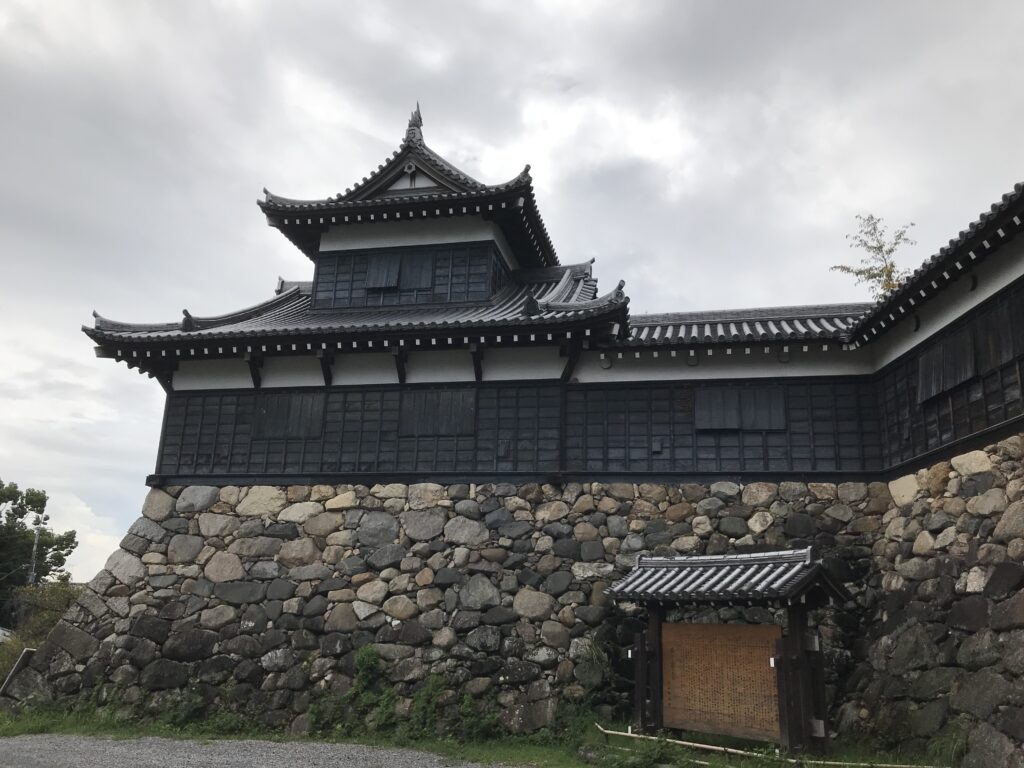
郡山城の御城印
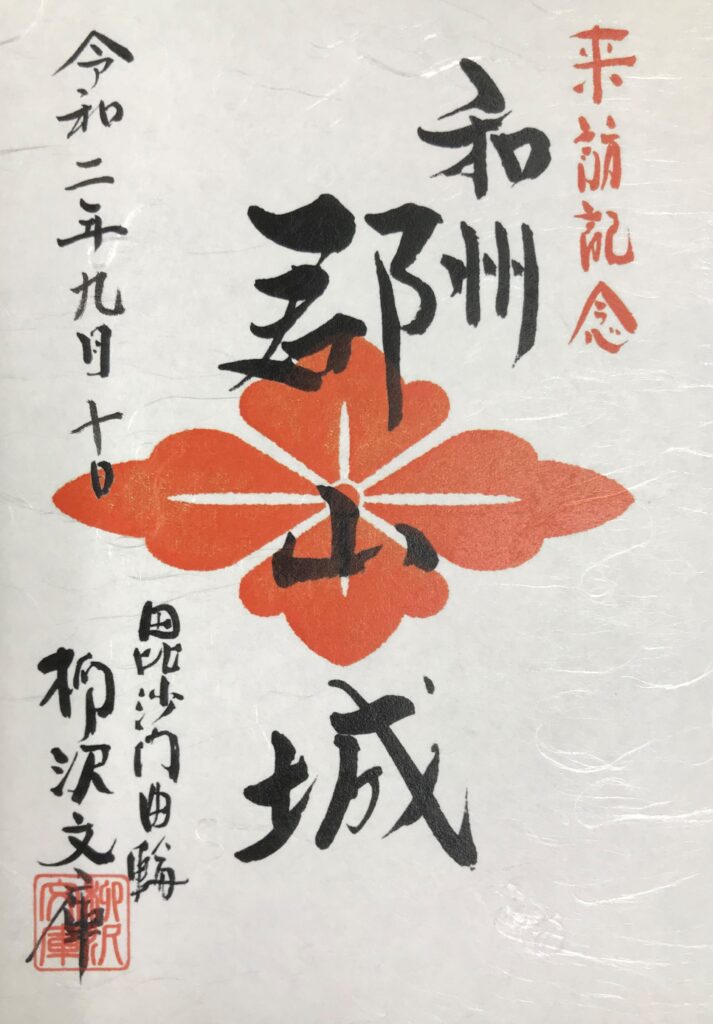
郡山城が紹介されている書籍
「続日本の100名城」に郡山城が紹介されています。
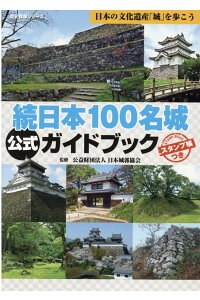
続日本100名城公式ガイドブック スタンプ帳つき 日本の文化遺産「城」を歩こう (歴史群像シリーズ) [ 日本城郭協会 ]
価格:1,760円
(2021/7/6 17:55時点)
感想(1件)
Koriyama Castle
Koriyama Castle was built by Junkei Tsutsui during the reign of Nobunaga Oda. In the reign of Hideyoshi Toyotomi, the castle was developed into a one million koku residence for his younger brother, Hidenaga Toyotomi. It is now recognized as one of the 100 next best castles in Japan. During a business trip to Nara, I made a side trip to visit the castle. From Koriyama Station on the Kintetsu Line, walk north along the railroad line and I saw a moat and a stone wall.
Entering the castle, I turned right in front of Koriyama High School and passed through the torii gate. Beyond the torii gate, one can see Yanagisawa Shrine. The shrine enshrines Yoshiyasu Yanagisawa, a close servant of Tsunayoshi, the fifth Tokugawa shogun. Yoshiyasu himself became the lord of Kawagoe-Kofu Castle, but his son, Yoshisato, moved from Kofu to become the lord of Koriyama Castle (150,000 koku) when the country changed hands.
The castle tower, which was recently renovated, can be climbed. The foundation stone of some building is placed on the stone wall. The form of the keep is quite cool, isn’t it? Since it was a weekday afternoon, there were no visitors at all, and I had the keep all to myself.
The view of Nara from here is quite impressive, as there are no tall buildings, and you can see every corner of the city. The restored Daigoku-den Hall was also faintly visible in the distance. Nara has an image of time passing so long that I felt I was looking at almost the same scene that Hidenaga Toyotomi saw.
After the Meiji Restoration, the castle was abandoned and all the buildings were removed, but the Otemon Gate and the turrets have been restored and maintained, giving it more of a castle-like appearance. Nara is often pulled by the image of the remains of the Nara period, such as the Heijo-kyo capital site, Todai-ji temple and Toshodai-ji temple, but I was able to confirm once again that the history of Nara is by no means broken and that castles were built in the Warring States period and the Edo period. (End)
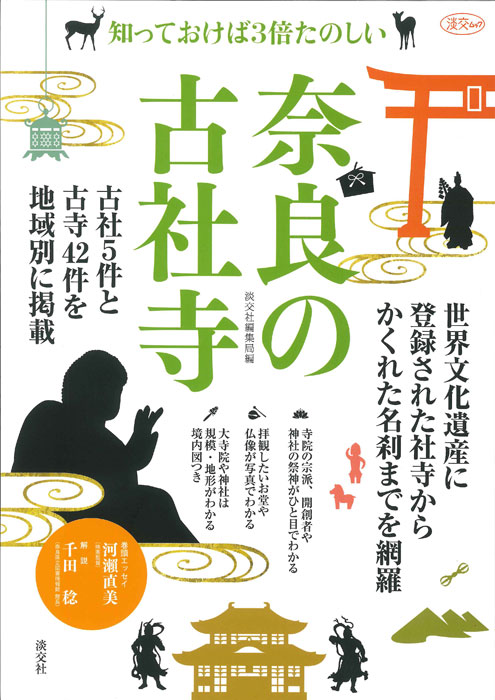
奈良の古社寺 知っておけば3倍たのしい (淡交ムック) [ 淡交社編集局 ]
価格:1,320円
(2023/1/8 00:38時点)
感想(0件)
Château de Koriyama
Le château de Koriyama a été construit par Junkei Tsutsui sous le règne de Nobunaga Oda. Sous le règne de Hideyoshi Toyotomi, le château a été transformé en une résidence d’un million de kokus pour son frère cadet, Hidenaga Toyotomi. Il est désormais reconnu comme l’un des 100 meilleurs châteaux du Japon. Lors d’un voyage d’affaires à Nara, j’ai fait un détour pour visiter le château. Depuis la gare de Koriyama sur la ligne Kintetsu, je me suis dirigé vers le nord le long de la voie ferrée et j’ai vu un fossé et un mur de pierre.
En entrant dans le château, j’ai tourné à droite devant le lycée de Koriyama et j’ai franchi la porte en torii. Au-delà de la porte en torii, on peut voir le sanctuaire de Yanagisawa. Ce sanctuaire rend hommage à Yoshiyasu Yanagisawa, un proche serviteur de Tsunayoshi, le cinquième shogun Tokugawa. Yoshiyasu devint lui-même le seigneur du château de Kawagoe-Kofu, mais son fils, Yoshisato, quitta Kofu pour devenir le seigneur du château de Koriyama (150 000 koku) lorsque le pays changea de mains.
La tour du château, qui a été récemment rénovée, peut être escaladée. La pierre de fondation de certains bâtiments est placée sur le mur de pierre. La forme du donjon est plutôt cool, n’est-ce pas ? Comme c’était un après-midi de semaine, il n’y avait aucun visiteur et j’avais le donjon pour moi tout seul.
La vue de Nara d’ici est assez impressionnante, car il n’y a pas de grands bâtiments et on peut voir tous les coins de la ville. La salle Daigoku-den restaurée était aussi légèrement visible au loin. Nara a une image du temps qui passe si longtemps que j’ai eu l’impression de regarder presque la même scène que celle vue par Hidenaga Toyotomi.
Après la restauration Meiji, le château a été abandonné et tous les bâtiments ont été enlevés, mais la porte Otemon et les tourelles ont été restaurées et entretenues, ce qui lui donne un aspect plus proche de celui d’un château. Nara est souvent attiré par l’image des vestiges de la période de Nara, comme le site de la capitale Heijo-kyo, le temple Todai-ji et le temple Toshodai-ji, mais j’ai pu confirmer une fois de plus que l’histoire de Nara n’est en aucun cas brisée et que des châteaux ont été construits pendant la période des Warring States et la période Edo. (Fin)
